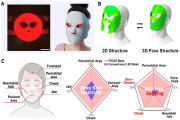Van Wagner Communications recently chose Daktronics Inc. to design and manufacture a new, light emitting diode (LED) display as a component of a spectacular new sign for its client, DB Climate Change Advisors, an institutional and alternatives climate change business of Deutsche Asset Management, a business division of Deutsche Bank AG. The curved LED display functions as the world's first scientifically valid, real-time carbon counter. The carbon counter is the prominent feature of the nearly 70-foot tall Deutsche Bank billboard located in the heart of New York City at 33rd Street and 7th Avenue, just outside of Madison Square Garden and Penn Station.
Deutsche Bank contracted with Van Wagner for the Penn Plaza location and for a complete turnkey installation of all of the display's elements. Van Wagner Sign Erectors, a division of Van Wagner Communications, fabricated the new steel structural elements required for the display and performed all aspects of the field installation, but a third-party manufacturer was required for the fabrication of the LED display. According to Irwin Sheftel, vice president of creative development for Van Wagner, who oversaw all aspects of the project, Van Wagner chose Daktronics "because of the company's experience in communicating real-time information to its LED displays … which not surprisingly was the most important aspect of this project."
The monochrome red, carbon-counting LED display stands approximately 6 feet high by 39 feet wide and shows the total amount of greenhouse gases accumulating in the earth's atmosphere.
The "Number" on the Carbon Counter includes all the greenhouse gases covered under the Kyoto and Montreal Protocols (24 gases excluding ozone and aerosols). Deutsche Bank's own software architects created the counting program that employs Daktronics' Venus 7000 display controller to communicate the greenhouse gas concentration data to the digital display imbedded in the billboard.
By using the most efficient LEDs in the industry today, Daktronics manufactured the Carbon Counter display to require only 1 red LED per pixel to operate, thus increasing efficiency while still maximizing brightness. The Carbon Counter LED display itself is carbon neutral, using low-risk credits (CERs) to offset its energy use.





 CN
TW
EN
CN
TW
EN





